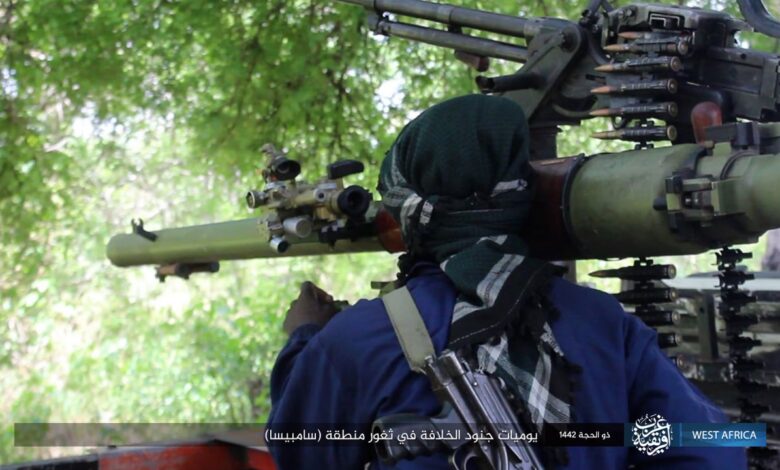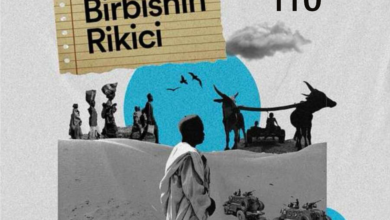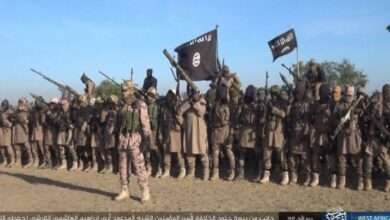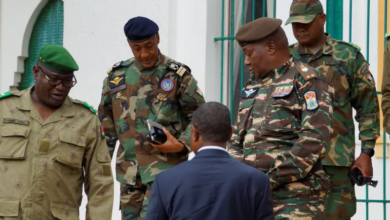ISWAP: Seven Years After Becoming An ISIS Franchise
ISWAP has become one of the most active affiliates seven years after joining ISIS. During this period, the ISIS territorial caliphate collapsed in the aftermath of intense counter-terrorism operations and lost two leaders to U.S. military raids in Syria.

The Islamic State West Africa Province (ISWAP) has gone through a split and a series of transformations and skirmishes since Abubakar Shekau pledged allegiance to the Islamic State (ISIS) group seven years ago in Mar. 2015 and rebranded Boko Haram.
The pledge to the then Islamic State leader Abu Bakr al-Baghdadi, who died in a United States military raid in northwestern Syria in 2019, led to the transformation of Boko Haram (or JAS; Jamā’at Ahl as-Sunnah lid-Da’wah wa’l-Jihād) into ISWAP. This development took place after persuasion within the senior ranks of the group and at a time when the Nigerian military was conducting a large-scale offensive.
Upon establishing ties, ISIS was said to have begun sending support to the group in the form of ideological and operational guidance, but also some material assistance according to details from a 2020 report from the Brussels-based International Crisis Group. The support extended to media activities and battlefield tactics as well.
On Aug. 2 2016, the Islamic State Al Naba propaganda magazine had announced Abu Musab al-Barnawi as the new leader after a faction consisting of ranking members including Mamman Nur and Abu Musab broke off and relocated to the Alagarno forest and Northern Borno-Lake Chad axis. The group of defectors had retained the ISWAP brand while Boko Haram reverted to the JAS designation.
Abu Musab, also known as Habib Yusuf, is the son of Mohammed Yusuf, the founder of Boko Haram captured and killed during the suppression of the 2009 uprising in Maiduguri, the Borno state capital and the then epicentre of clashes between security forces and members of his sect. The campaign left hundreds dead and the sect’s headquarters in ruins.
A rare internal insight into the relationship between the group and ISIS was detailed in Shekau’s last audio message, believed to have been recorded a day before his death and obtained by HumAngle. In the 29 minutes-long message, Shekau spoke of his initial allegiance to Al-Qaeda and pledge to the Islamic State. He also discussed the ideological feud with the rival faction.
In the aftermath of the separation, ISWAP grew to become the dominant terror group in the northeast and the Lake Chad region — carrying out raids on military bases and targeting vulnerable garrison towns and communities alongside exploiting the local resources and population in areas where the group wielded influence.
On the other hand, the lethality and influence of Boko Haram and its leader continued to nosedive as a result of internal issues and external pressures, particularly from the Nigerian military. Boko Haram was able to gain a franchise known commonly as the Bakura group operating in Lake Chad and established links in Northwest Nigeria.
Following the reemergence of Al-Barnawi as an interim leader of ISWAP and the rollout of reforms, the ideological and operational feud between the two rival groups culminated with an ISWAP column advancing from their harbour area and seizing the Sambisa forest stronghold and the headquarters of Boko Haram after intense fighting in May 2021.
HumAngle has previously analysed the grievances against Shekau, including issues relating to creed and extreme position on takfir (declaring someone to be an unbeliever). The publication on ‘Cutting Out the Tumour from the Khawarij of Shekau’ also provides insights on the ideological difference.
The offensive against Shekau was said to have been sanctioned by the central body under the leadership of Abu Ibrahim al-Hashimi Al-Qurashi, the successor of al-Baghdadi. (Al Qurashi died in a Feb. 2022 raid in Syria by U.S. Special Forces). In June, a video emerged showing Boko Haram fighters pledging allegiance to ISIS and joining ISWAP.
However, the group’s attempt to absorb Boko Haram ran into a brick wall due to the unwillingness of some fighters to join its ranks. Tens of thousands of fighters and civilians associated with the group fled the hinterlands and surrendered to the authorities, while some fighters have violently resisted ISWAP rule in the Lake Chad and Mandara mountain range area near the border with Cameroon.
The recent pledge to ISIS’s new leader, Abu Al-Hassan Al-Hashimi Al-Qurashi, provides a glimpse into operational and strategic changes that have taken place within the group including expansion into Boko Haram territories and what appeared to be the adoption of a subgroup or semi-autonomous model. HumAngle understands that ISWAP traditionally had units of varying capacities across different mainland and island locations.
Five pledges from ISWAP subgroups were shown, which consisted of groups in Lake Chad, Faruq, Kerenoa, Sambisa and Banki, alongside a version from Islamic State in the Greater Sahara (ISGS), an independent ISIS subgroup operating in Burkina Faso, Mali, and Niger.
The first media material on the pledge was from the Lake Chad-based group, a region in the far north of Borno and around the islands dotting the Lake. The fighters had a wide range of weapons including an ex Nigerian Army Mowag Piranha armoured wheeled vehicle and a Galil ACE 32 rifle likely captured from Chadian forces.
The second clip was from Faruq, likely referring to fighters based in the Alagarno forest/Timbuktu Triangle enclave. The fighters appeared with improvised armoured vehicles. The third pledge was from Sambisa, Boko Haram’s former stronghold and headquarters, and the footage had fighters displaying a Nigerian Army CS/VP3 “Bigfoot” MRAP.
The fourth pledge came from Banki, a former Boko Haram area of influence near the border of Cameroon, while the fifth clip contained a pledge from Kerenoa in the Marte area of northern Borno near the fringes of Lake Chad.
Another significant development in addition to the governance and operations modelling is the absence of clarity on the leadership of ISWAP following Abu Musab’s sudden disappearance. HumAngle understands that this is not the first time he has opted to stay off the radar.
The 12-years-long conflict in the region has led to nearly 350,000 deaths, mostly from indirect causes, and displaced over two million people.
Support Our Journalism
There are millions of ordinary people affected by conflict in Africa whose stories are missing in the mainstream media. HumAngle is determined to tell those challenging and under-reported stories, hoping that the people impacted by these conflicts will find the safety and security they deserve.
To ensure that we continue to provide public service coverage, we have a small favour to ask you. We want you to be part of our journalistic endeavour by contributing a token to us.
Your donation will further promote a robust, free, and independent media.
Donate Here



